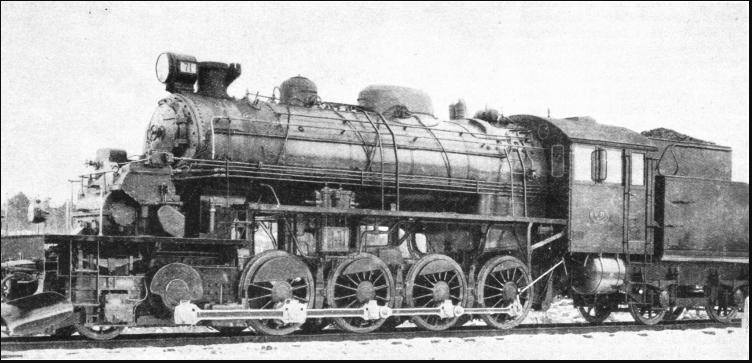|
|
ALTHOUGH a good deal is heard from time to time of the advantages of the electric locomotive, or that deriving its power from a diesel engine, that well-tried servant of the travelling public—the steam locomotive—is not yet superseded or even obsolescent, as recent performances on British main lines have conclusively demonstrated. On the Continent, also, and elsewhere, the steam locomotive is equally alive. Many experiments have been made in the attempt to improve the efficiency of the steam locomotive. In particular, engineers have tried to apply to the locomotive the principle of the steam turbine which has been so successful in ships and in power stations. It is a moot point whether or not turbine propulsion should be combined with the use of a condenser. In theory, if this is done, the exhaust steam, with all its heat, is conserved, instead of being wasted in the atmosphere. In practice the non-condensing turbine locomotive has proved more successful than one provided with a condenser. Several British experimental turbine locomotives have been built. In 1910 there appeared a turbo-condensing engine, with electrical propulsion. Eleven years later an improved version was built. In later experiments the electrical transmission was dispensed with. Meanwhile, the Swedish engineer, Fredrik Ljungstrom had been carrying out some interesting experiments. His condensing turbo-locomotive of 1921 comprised two vehicles coupled together. One vehicle carried the boiler and the other the condenser. The turbine was placed between the two. In 1926 an English firm built a locomotive of similar type under the Ljungstrom patents. This engine was tested for some months on the L.M.S. Railway. The L.M.S. brought, out, in 1935, a turbine express passenger locomotive, without either electrical transmission or condenser. This engine has performed remarkably well. Recently turbine propulsion has been revived in Sweden, as may be seen in the striking example illustrated below. The engine is of the 2-8-0 type. The structure in front of the smokebox is the motor unit, and consists of a non-condensing turbine of the Ljungstrom type. Running at the high speed of 10,000 revolutions a minute and supplied with superheated steam at a boiler pressure of 185 lb. per sq. in.. the turbine transmits its power to a jackshaft immediately below it through reduction gearing analogous to that of a motor car and having a ratio of 1 to 50.7. The ends of the jackshaft are provided with balanced cranks which are connected by coupling rods to the crank-pins of the four driving wheels on either side. The turbine, although it exhausts to the atmosphere and not to a condenser, is capable of developing 1,350 horse-power, and the normal tractive effort is 39,680 lb. The gauge is the standard one of 4 ft. 8-1/2 in. and the driving wheels are of 4 ft. 5-1/8 in. diameter. The locomotive is used on a line in Sweden on which there is a large amount of heavy mineral traffic. The line is worked by the Grangesberg-Oxelosund Traffic Company, for which three engines of this type have been supplied by the firm of Nydqvist and Holm A. B. Trollhattan, Sweden. It may be asked what advantage the non-condensing turbine locomotive has over the ordinary reciprocating type, and by way of answer some figures may be quoted. The first of the three locomotives has been engaged in hauling heavy iron-ore trains having a dead load of 1,750 tons behind the tender. Long inclines of 1 in 100 have presented no difficulty. A distance of 71,500 miles was run before general repairs were needed, the greatest distance run by reciprocating engines engaged on the same work being 36,000 miles. Comparative tests, made in 1933 between the two classes of engine, showed a saving of fuel of 23.8 per cent with the turbine locomotive.  Many thanks for your help
|
   Share this page on Facebook - Share  [email protected] |




